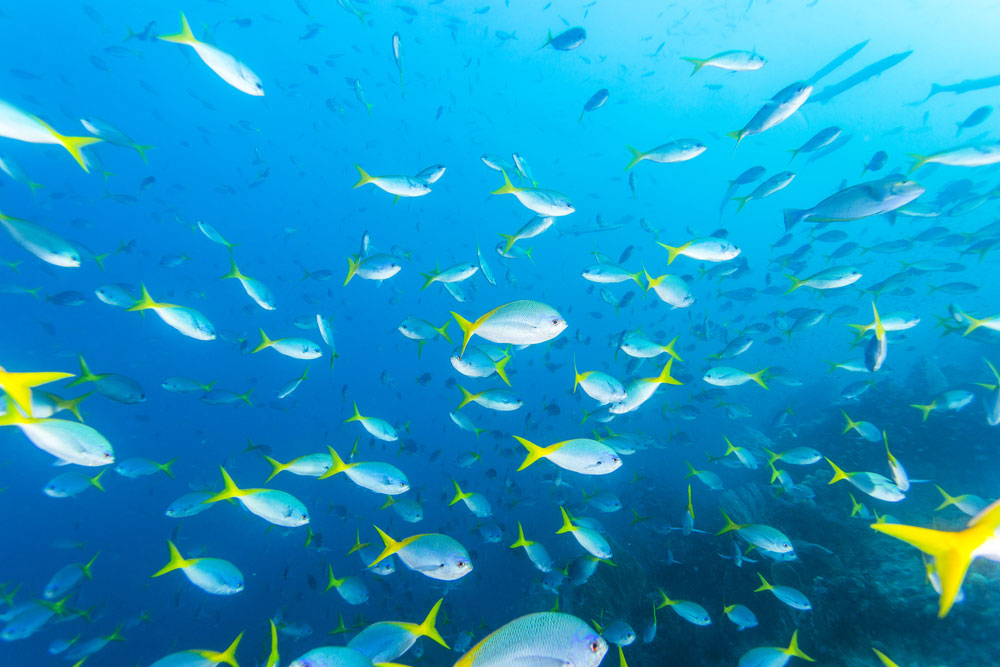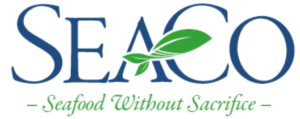
On February 23, students with backgrounds in Biotechnology, Nutrition, Chemical Engineering, Biology, Biochemistry, Material Sciences, and Electrical Engineering came together for the Plant-based Seafood Collider Kickoff Event.
According to the World Wildlife Fund, “For centuries, our seas and oceans have been considered a limitless bounty of food. However, increasing fishing efforts, over the last 50 years as well as unsustainable fishing practices, are pushing many fish stocks to the point of collapse.” With the problems of overfishing and fish farming reaching crisis levels, demand for plant-based fish products is on the rise. Better and more affordable plant-based seafood products are needed to provide delicious and convenient alternatives to wild-caught and farmed fish.
In this 8-week Collider, students will craft an R&D roadmap for a novel company that will produce fish-like products only using sustainable plant-derived compounds. Through understanding the molecular, microstructural, textural properties of fish and how these properties relate to what makes fish taste, smell, and cook like fish, students will be able to create a strong business plan. Students must choose 1 of the following fish and one other fish not listed: Carp, Tilapia, Salmon, and Catfish.
Professor Ricardo San Martin began the Kickoff Event with explaining the Collider challenge, and mentioned that, “students will be faced with many complexities because not all fish look the same, taste the same, and are the same.” Students must take into account physical factors, chemical factors, and diverse treatments. Some physical factors include fish species, age, size, seasonal changes, feeding ingredients, sample heterogeneity, and gaping. Several chemical factors such as water content and distribution, fat content and distribution, protein content, and collagen content should play a large role in their analysis. Students should take treatment into consideration such as storage timing and temperatures, freezing, chilling, ice storage, slaughter methods, high-pressure processing, salting, and smoking. Lastly, structure is very important. Protein structure, collagen cross-linkage, myofibrils changes, connective tissue, muscle cellularity, and muscle fiber diameter are all important structural factors.
Next, Christie Lagally, Senior Scientist from Good Food Institute (GFI) explained that sea animals are harvested in large amounts each year and how this number continues to grow. Globally, aquaculture supplies more than 50 percent of all seafood produced for human consumption and this percentage continues to rise. Sources of US seafood include importing from foreign countries (90%), US wild capture fisheries, and US aquaculture. Seafood production has severe consequences including environmental destruction, wildlife bycatch, dwindling fish populations, health risks, heavy metals, and animal welfare concerns. Lagally went into detail with overfishing, explaining “overfishing is unsustainable and ruins habitats.” Overfishing is when more fish are caught than can be replaced through reproduction. Overfishing is caused by bottoms trawling, long lining, clear ocean floors of life, destruction of coral reefs, lack of government oversight, illegal fishing, open access fishing and government subsidies which support unsustainable fishing. Moreover, fishing kills ocean life by way of bycatch. Lagally mentioned, “nearly 1,000 marine mammals –dolphins, whales, and porpoises—die each day in fishing nets.” Fishing also depleted food sources for wildlife. In 2016, seven orca whales in Seattle’s Puget Sound were either missing or deceased, and today only seventy-eight orcas remain. Researchers believe orcas are starving due to lack of fish. Lagally went further by explaining how fish farms pullets are inefficient: “Coastal fish farms release feces, antibiotics, parasites, and non-native fish into sensitive marine ecosystems. Since most farmed fish are carnivores, farmed fish requires 2-5 units of pelagic fish to produce 1 unit of farmed fish.” Of course, fish are also sentient, intelligent beings. Mounting evidence shows that they can feel pain in a manner similar to humans. Fish show signs of Machiavellian intelligence, such as cooperation and reconciliation. Mental complexity that fish display is on par with more vertebrates. For these reasons, the Good Food Institute is excited to explore plant-based seafood and find new solutions to support the fish ecosystem.
Next, Renee Loux, Co-CEO of SeaCo, discussed more about the challenge and her reasons for getting involved in this industry. She started off with the quote, “If you care about breathing, you should care about the ocean.” She explained how everything is tied back to the ocean, and if we want help the oceans, we should leave them alone! Loux has been a champion and trendsetter in the environmental and sustainable food movement for nearly 20 years. As an author, chef, restaurateur, television personality, culinary nutrition expert, researcher, and journalist, she is a leading expert in the field with multi-media communication to a wide and varied audience. Renée has published 4 books: the Gourmand Award-winning The Balanced Plate, and Living Cuisine, Easy Green Living, and The Whole Green Catalog. Loux is currently the Co-CEO of SeaCo, which stands for Seafood without Sacrifice. Louz explained that if “we are able to understand the composition of the fish, then we will be able to create a plant-based product much better”.
In this Plant-Based Seafood Collider, students will uncover the components of flavor, texture, and aromatics that make fish a valued food for so many people. Students will work with experts in food chemistry and proteins to understand ‘what makes fish taste, smell, and cook like fish.” This key information will enable food chemists and chefs to seek out plant-based proteins that can replicate fish taste and texture. The students will collaborate with experts to collect this key information on fish flavor and texture and propose methods for finding plant-based versions of these characteristics. Students will investigate sensor technology, from similar tools to mass spectrometry to analyze flavor profiles, to textures sensors for use in replicating the delicate texture of fish. Using the information from their research into fish characteristics, and their new knowledge of sensors for deciphering this characteristic information, students will propose an R&D plan to find the most promising plant-based proteins and flavor and analysis tools to help create the next generation of sustainable, plant-based fish. Students will investigate and document the key biochemical and textural aspects of carp, tilapia, salmon, shrimp, and catfish (which represent a variety of seafood textures). They will use this information to propose an R&D plan for replicating fish flavor and texture using the most sophisticated sensor technologies and analyzers (both in and out of the food industry) which will help major plant-based foods companies find potential proteins, aromatic compounds, and textures from plants to meet the demand for plant-based fish.
Sponsor: SeaCo
This Collider Project is generously sponsored by SeaCo . SeaCo is a partnership of BeyondBrands and New Crop Capital committed to utilizing innovation and commerce to solve our oceans’ issues.
$5K in prizes for the winning teams.
Advisor:
Good Food Institute
The Good Food Institute works with scientists, investors, and entrepreneurs to make groundbreaking good food a reality. We focus on clean meat and plant-based alternatives to animal products – foods that are more delicious, safer to eat and better for the planet than their outdated counterparts.
